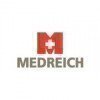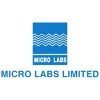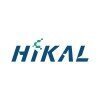
i
Global Calcium
Filter interviews by
Global Calcium Quality Control Analyst Interview Questions and Answers
Global Calcium Quality Control Analyst Interview Experiences
1 interview found
(2 Questions)
- Q1. What is mole then what present in mole
- Ans.
A mole is a unit of measurement used in chemistry to express amounts of a chemical substance.
A mole is defined as the amount of a substance that contains the same number of entities as there are atoms in 12 grams of carbon-12.
The number of entities in a mole is known as Avogadro's number, which is approximately 6.022 x 10^23.
Moles are used to measure the amount of a substance in chemical reactions and equations.
Commonl...
- Q2. What is valancy
- Ans.
Valency is the combining power of an element, determined by the number of electrons it will lose, gain, or share in order to achieve a stable electron configuration.
Valency is the number of bonds an atom can form with other atoms.
It is determined by the number of electrons in the outermost shell of an atom.
For example, carbon has a valency of 4 because it can form 4 covalent bonds.
Sodium has a valency of 1 because it c...
Top trending discussions






Interview questions from similar companies

I applied via Walk-in and was interviewed in Feb 2024. There was 1 interview round.
(1 Question)
- Q1. What is your current job role? Types of components in HPLC.. Detectors type in HPLC.
Interview Preparation Tips

I applied via Walk-in and was interviewed before May 2023. There were 2 interview rounds.
(2 Questions)
- Q1. Difference between GC and HPLC
- Ans.
GC is used for volatile compounds, while HPLC is used for non-volatile compounds.
GC stands for Gas Chromatography, while HPLC stands for High Performance Liquid Chromatography.
GC is used for separating and analyzing volatile compounds, such as gases and liquids that can be vaporized without decomposition.
HPLC is used for separating and analyzing non-volatile compounds, such as pharmaceuticals, proteins, and carbohydrat...
- Q2. Working principle of IR,uv
- Ans.
IR and UV spectroscopy are analytical techniques that utilize the absorption of infrared and ultraviolet-visible light to identify and quantify substances.
IR spectroscopy measures the absorption of infrared radiation by a sample to identify functional groups in organic molecules.
UV spectroscopy measures the absorption of ultraviolet-visible light by a sample to determine the presence of conjugated systems in organic co...
(2 Questions)
- Q1. Self introduction
- Q2. Salary discussion
Interview Preparation Tips
- GC
- HPLC

Quality Control Analyst Interview Questions & Answers
Gland Pharmaposted on 6 Nov 2020
Interview Questionnaire
2 Questions
- Q1. Choosing in Gc or Hplc
- Q2. Salary

Quality Control Inspector Interview Questions & Answers
Hetero Healthcareposted on 19 Jun 2024
Aptitude test and psychotropic test
(2 Questions)
- Q1. What is accuracy
- Ans.
Accuracy refers to the degree of conformity of a measured or calculated quantity to its actual value.
Accuracy is the closeness of a measurement to the true value.
It is important in quality control to ensure products meet specifications.
For example, in manufacturing, accuracy is crucial in ensuring products are made to the correct dimensions.
- Q2. What is precision
- Ans.
Precision refers to the level of consistency and accuracy in measurements or actions.
Precision is the ability to consistently produce the same result under the same conditions.
It is important in quality control to ensure products meet specific standards and requirements.
Precision can be measured by calculating the standard deviation of a set of data points.
For example, in manufacturing, precision is crucial in ensuring
Skills evaluated in this interview

I applied via Company Website and was interviewed before Aug 2023. There was 1 interview round.
(2 Questions)
- Q1. What is Quality control
- Ans.
Quality control is a process used to ensure that products or services meet specific standards and requirements.
Quality control involves monitoring and testing products or services to identify defects or errors.
It aims to prevent defects from reaching customers and ensure consistent quality.
Examples of quality control methods include statistical process control, inspection, and testing.
Quality control is essential in in...
- Q2. How to handle the instrument
- Ans.
Handle the instrument with care and follow proper procedures
Always read the instruction manual before using the instrument
Ensure the instrument is calibrated and maintained regularly
Use the instrument only for its intended purpose
Clean the instrument after each use to prevent contamination
Store the instrument in a safe and secure location when not in use
Interview Preparation Tips

Quality Controller Interview Questions & Answers
Bharat Serums and Vaccinesposted on 20 Sep 2023
I applied via Approached by Company and was interviewed before Sep 2022. There were 2 interview rounds.

(8 Questions)
- Q1. Basic questions
- Q2. What is Quality control
- Ans.
Quality control is a process used to ensure that products or services meet specified requirements and standards.
Quality control involves monitoring and testing products or services to identify defects or deviations from standards.
It aims to prevent defects, improve processes, and ensure consistency in the quality of products or services.
Examples of quality control methods include statistical process control, inspection...
- Q3. Which is pH mentain
- Q4. Introduction your self
- Q5. Project information
- Q6. Which is University
- Q7. Who is experience
- Q8. What is pass year
Interview Preparation Tips

Quality Assurance/Quality Control Manager Interview Questions & Answers
BDR Pharmaceuticals Internationalposted on 28 Mar 2022
Any incident to solve or how to correct kr resolve the problem.
(2 Questions)
- Q1. Blend unifomity calculation and how to select die.
- Ans.
Blend uniformity calculation and die selection for QA/QC Manager role.
Blend uniformity calculation involves determining the homogeneity of a mixture.
It is important to select the appropriate die for the blend to ensure consistent tablet weight and hardness.
Factors to consider when selecting a die include tablet size, shape, and desired release profile.
Die selection should also take into account the properties of the ac...
- Q2. Process and packing validation and related guidline.
Interview Preparation Tips

Quality Control Officer Interview Questions & Answers
Teva Pharmaceuticalsposted on 28 Mar 2023
I applied via Referral and was interviewed before Mar 2022. There were 4 interview rounds.

(2 Questions)
- Q1. What are the principles of GCP
- Q2. What are the parameters for method validation
- Ans.
Parameters for method validation include accuracy, precision, specificity, linearity, range, and robustness.
Accuracy: how close the measured value is to the true value
Precision: how reproducible the results are
Specificity: how well the method measures only the analyte of interest
Linearity: how well the method produces results that are proportional to the analyte concentration
Range: the concentration range over which th...
(1 Question)
- Q1. Questions based on scenarios given to you
(1 Question)
- Q1. Tell us about yourself
- Ans.
I am a detail-oriented Quality Control Officer with a strong background in ensuring product quality and compliance.
Experienced in conducting quality inspections and audits
Proficient in using quality control tools and techniques
Skilled in analyzing data and identifying areas for improvement
Excellent communication and problem-solving skills
Ability to work collaboratively in a team environment
Knowledge of industry regulat...
Interview Preparation Tips
Skills evaluated in this interview

Team Leader-Quality Assurance/Quality Control Interview Questions & Answers
Fresenius Kabiposted on 27 Apr 2021
Interview Questionnaire
10 Questions
- Q1. Whats about your job profiles
- Q2. Why you change your job
- Q3. What is pH calibration point
- Ans.
pH calibration point is the value at which a pH meter is calibrated to ensure accurate readings.
pH calibration point is a reference point used to calibrate pH meters.
It is usually set to pH 7.0, which is considered neutral.
Other calibration points may be used depending on the specific application.
Calibration is important to ensure accurate pH measurements.
Calibration should be performed regularly to maintain accuracy.
- Q4. What is UV principal
- Ans.
UV principal refers to the use of ultraviolet light to detect and analyze substances.
UV principal involves the use of ultraviolet light to identify and quantify substances.
It is commonly used in forensic science to detect bodily fluids and other trace evidence.
UV principal is also used in chemistry to analyze the composition of materials.
It works by measuring the absorption or emission of UV light by a substance.
UV pri...
- Q5. What's about uses of uv
- Ans.
UV is used for various purposes such as sterilization, curing, and detection.
UV light is used for sterilization of surfaces, water, and air.
UV curing is used in industries such as printing, electronics, and automotive for drying and hardening materials.
UV detection is used in forensic science to detect bodily fluids and in medical fields for diagnosis and treatment.
UV light is also used in tanning beds for artificial t...
- Q6. Tell me sampling process in raw material
- Ans.
Sampling process in raw material involves selecting a representative portion of the material for testing.
Identify the lot or batch number of the raw material
Select a random sample from the lot or batch
Ensure the sample is representative of the entire lot or batch
Test the sample for quality and purity
Accept or reject the lot or batch based on the test results
- Q7. Polarimeter calibration
- Q8. What is data intingity
- Ans.
Data integrity refers to the accuracy, completeness, and consistency of data throughout its lifecycle.
It ensures that data is reliable and trustworthy.
It involves maintaining the accuracy and consistency of data over time.
It includes measures to prevent unauthorized access, modification, or deletion of data.
Examples of data integrity measures include data backups, access controls, and audit trails.
- Q9. What is OOS
- Q10. What is mean by ALCOVA
- Ans.
ALCOVA stands for Analysis of Covariance
ALCOVA is a statistical method used to analyze the relationship between a dependent variable and one or more independent variables while controlling for the effects of other variables.
It is commonly used in experimental research to determine if there is a significant difference between groups after controlling for a covariate.
ALCOVA is similar to ANCOVA (Analysis of Covariance) b...
Skills evaluated in this interview
Global Calcium Interview FAQs
Tell us how to improve this page.
Global Calcium Interviews By Designations
- Global Calcium Chemist Interview Questions
- Global Calcium Associate Trainee Interview Questions
- Global Calcium Asst Store Interview Questions
- Global Calcium EHS Officer Interview Questions
- Global Calcium Executive Interview Questions
- Global Calcium HR Officer Interview Questions
- Global Calcium Management Executive Interview Questions
- Global Calcium Packing Officer Interview Questions
- Show more
Interview Questions for Popular Designations
- Quality Controller Interview Questions
- Quality Assurance/Quality Control Manager Interview Questions
- Quality Control Officer Interview Questions
- Team Leader-Quality Assurance/Quality Control Interview Questions
- Quality Assurance Quality Control Engineer Interview Questions
- Executive Quality Control Interview Questions
- Chemist Quality Control Interview Questions
- Manager Quality Control Interview Questions
- Show more
Global Calcium Quality Control Analyst Interview Process
based on 1 interview
Interview experience
Interview Questions from Similar Companies
|
Chemist
95
salaries
| ₹1.6 L/yr - ₹3.6 L/yr |
|
Officer
74
salaries
| ₹2.1 L/yr - ₹5.2 L/yr |
|
Associate
71
salaries
| ₹2 L/yr - ₹3.2 L/yr |
|
Executive
60
salaries
| ₹3.2 L/yr - ₹6.8 L/yr |
|
Production Associate
55
salaries
| ₹0.7 L/yr - ₹3.4 L/yr |

Tata Chemicals

Gulshan Polyols

Sudeep Pharma
Neelkanth Chemicals
- Home >
- Interviews >
- Global Calcium Interview Questions >
- Global Calcium Quality Control Analyst Interview Questions









